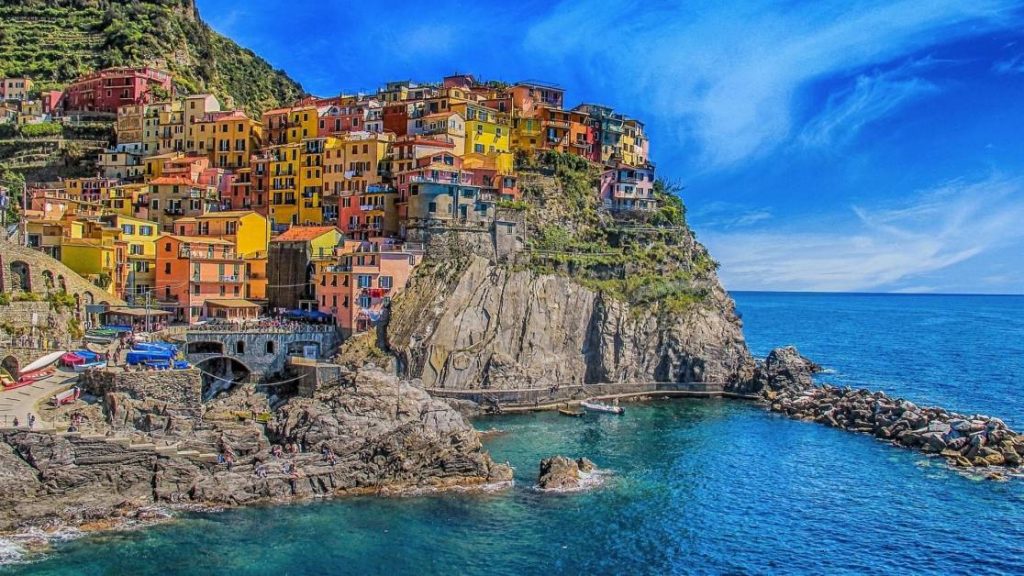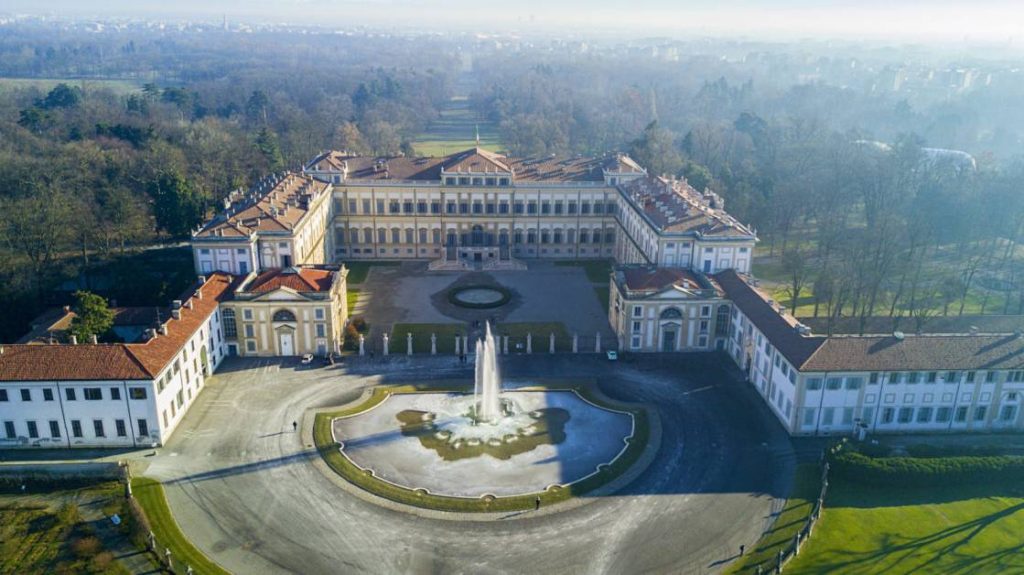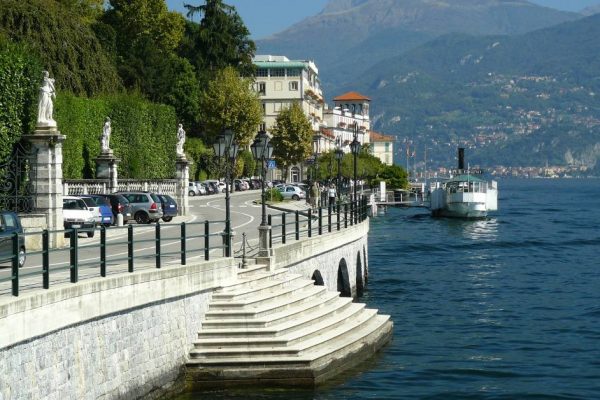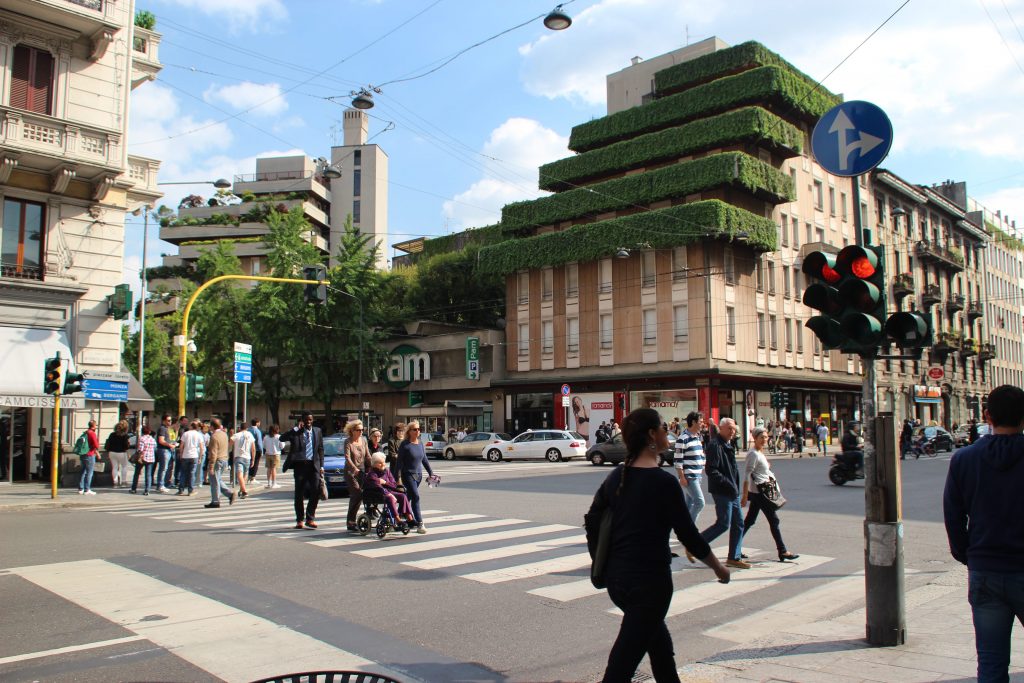Almost seven years in Italy, and I cannot believe I never heard of or noticed any of these non-touristy places in Milan until now, nor have I mentioned them on the blog. Guess I have been so entangled in the world of the famous attractions in Milan, that I overlooked these hidden gems.
Beyond its well-known attractions lies a treasure trove of secret places that await the adventurous traveler willing to journey off the beaten path. Let’s uncover some of Milan’s best-kept secrets, those secret places in Milan that add a touch of mystery and enchantment to this vibrant city, and their addresses.
What you will find in this post
Milan’s Walk of Fame
Address: Largo Corsia dei Servi 21
Located exactly between Corso Vittorio Emanuele, Piazza San Babila, and Piazza Beccaria, a few hundred meters from Piazza del Duomo. Here once stood the headquarters of ‘TV Sorrisi e Canzoni’, the weekly that conceived and organised the ‘International Entertainment Grand Prix’, known as ‘Telegatti Night’.
The Telegatto (Award) was a statuette assigned by readers of the weekly as recognition to the best programs and personalities of the past television season. The most illustrious guests and all the winners of the ‘Award’ were invited to leave their fingerprints and autograph on a cast which was then transformed into a plate and positioned along the walkway, which is now famously called The Walk of Fame in Milan.
Oldest Doorbell in Milan
Address: Palazzo Sola Busca in Via Gabrio Serbelloni, 10, 20122 Milano MI
The doorbell or intercom as it is also called, does not have a push-button panel or labels with names and surnames. The first intercom made in Italy has a bizarre shape: that of a huge ear. It is a bronze sculpture, complete with an auricle and external auditory canal, placed next to the entrance door of Cà dell’oreggia (House of the ear), a Milanese nickname of Palazzo Sola Busca.
The 70 centimeters high ear, was conceived as an ante litteram wireless communication system to connect the inside of the building with the outside – a futuristic idea of the time. Today it has become a small source of mystery: it is said that anyone who approaches it and whispers a wish will one day see it come true.
The building is an open-air work of art. It was built in the second half of the 1920s by the Mantuan artist, Milanese by adoption, Aldo Andreani (1887-1971). He wanted an intercom “in disguise” with great aesthetic value which, in addition to having a practical purpose, an allusive meaning: “Listening to the city”.
A Bank Vault
Address: Corso Buenos Aires, 10, 20129 Milano MI
Inside the Tresse Store at Porta Venezia was situated a former Desio Bank. Among the dressing rooms of a store, there is a bank vault with a secret passage. The enormous vault has now been used as changing rooms.
You can change between the safety deposit boxes of the bank that existed before the shop. Many are true, and others are fake, but the most absurd thing is that an original secret passage has remained intact.
To find the secret passage, search for Box 892, where you can still see the secret passage that connects the vault with an external safe. Once upon a time, Box 892 allowed cops to enter the vault directly in the event of a robbery.
Rainbow District
Address: Via Abramo Lincoln
Adjacent Via Franklin is a set of houses with colours similar to a painter’s palette and known as the Milanese Burano street. Near Piazza Cinque Giornate, Via Lincoln, and the Giardino district are a timeless corner of Milan, a rich blend of greenery and colorful villas.
The history of this neighborhood begins in 1889 when a group of friends, who dreamt of a neighborhood where the inhabitants can live in small houses at affordable prices, in a quiet area, gave life to the “garden neighborhood” project.
Over the years, the inhabitants have continued to beautify the neighborhood, starting a sort of challenge to find the brightest and most cheerful color for the facade of their own house.
Pink Flamingos
Address: Via Cappuccini, 7, 20122 Milano MI
A true hidden gem, Villa Invernizzi is an enchanting mansion nestled within the city, known for its extraordinary residents – a flock of Pink Flamingos.
The Villa’s private garden is home to these elegant birds, creating a surreal juxtaposition between urban living and wildlife. Visitors can catch glimpses of these vibrant creatures from the street, creating a truly unique and unexpected sight.
House 770
Address: Via Carlo Poerio, 35, 20129 Milano MI
Casa 770, la casa del rabbino (the rabbi’s house), with only 12 clones in the world is a place full of mysticism connected with other sister buildings all over the world.
770 houses are present in the United States, in New York, New Jersey, Cleveland, and also in Los Angeles. In Canada in Montrèal, in Israel in Ramat Shlomo in Kfar Chabad, Kfar Tapuach, Kiryat Ata, and Zikhron Ya’aquov, locations located near Tel Aviv and Haifa. Still others are in Sao Paulo, Buenos Aires, Melbourne, Santiago de Chile, and also in Ukraine.
The Milanese one is the only one in Europe, a neo-Gothic style house located in the liberty district that makes the red bricks and the long windows and pointed Spiers stand out.
The unique house in Milan has become an important meeting place and cultural reference point for the city. Events ranging from art exhibitions to tastings of typical Jewish cuisine, strictly kosher dishes are organised here.
House of Cards
Address: Viale Berengario, 8, 20149 Milano MI
If you are in the City Life area, you can take a slight detour on Viale Berengario to come across the famous Castello Pozzi, also known as House of Cards, Le Carte del Castello or Paper Castle. Walking among the buildings, you will be amazed to suddenly encounter a huge house of cards that rises triumphantly in front of the front facade of the building.
The large installation is the work of Rinaldo Denti, owner of the castle, and Elio Fiorucci, the well-known stylist, and presents itself as a suggestive and colorful touch of art in the midst of the greyness of the city. During the evening, the cards with baroque designs, in perfect Fiorucci style, light up thanks to fun neon games, which make the panorama even more exciting.
Toilet Paper Magazine
Address: Via Giuseppe Balzaretti, 4, 20133 Milano MI
Located in the Città Studi neighborhood is the Toilet Paper Magazine Headquarters which changes the design of its outer walls from time to time with beautiful and colourful art. It is a temple of anti-minimalism, but also a design that doesn’t take itself too seriously. If you are in the area, you can stop by to have a look.
Basilica of Sant’Eufemia
Address: Piazza Sant’Eufemia, 2, 20122 Milano MI
On the outside, it looks like just another regular Church you can find in Milan, but don’t be deceived by its facade. The interior is neo-Gothic; both the walls and vaults are richly decorated with frescoes. Its construction began in 1793 and was completed only in the nineteenth century with the addition of the dome designed by Giuseppe Bovara.
Red House
Address: Corso Magenta, 12, 20121 Milano MI
Note that Cassa Rossi Red House is now closed to the public, because it has been sold to a private owner.
The secret octagonal courtyard – Casa Rossi, also known as Red House. Arriving at Casa Rossi from the central door you find yourself in an internal courtyard which you can discover its wonder only by looking up. The courtyard is built in an octagonal shape with Tuscan-order pillars and lunettes above the windows. The second courtyard is designed with a rectangular plan.
The first courtyard is the showstopper for every Instagramer. Access is allowed to everyone. Inside the octagon there is also a bistro and, on the first two floors, there is a small luxury Bed and Breakfast.
So, which of these findings were new to you, and did I miss out on anything? Help build the list, and leave your thoughts in the comment box.












